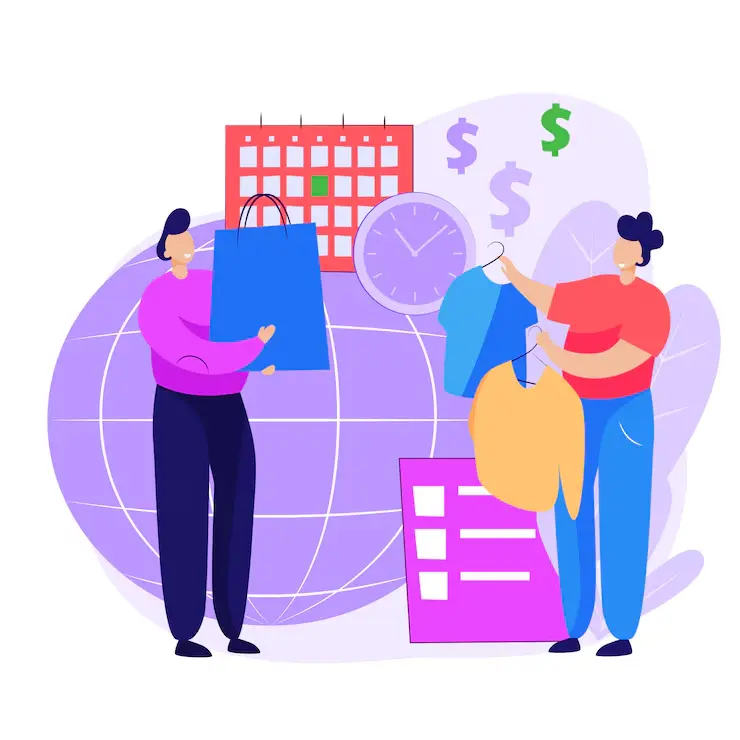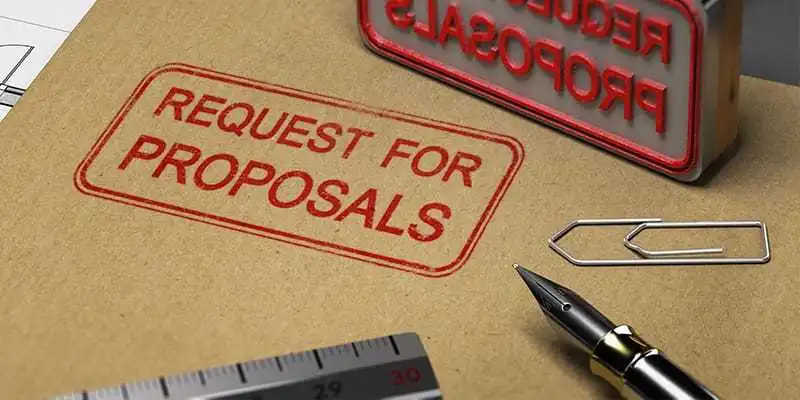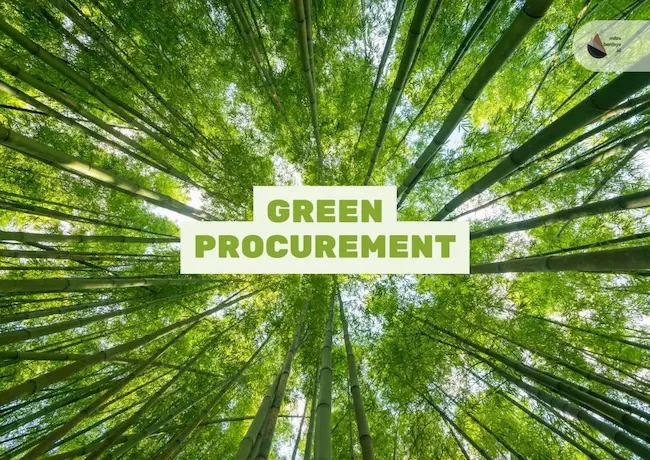Each business is unique and needs a different strategy for procurement.Therefor optimization of the procurement workflow is essential to meet the tailored needs of various companies. In previous years, traditional procurement strategies were used which are outdated now and have many flaws. Technological solutions have made the procurement process easy to optimize and customize according to the scope of each project and each business. In this blog, we will discuss the procurement optimization strategies to enhance the efficiency of workflow.
Procurement Explanation
Procurement is a sequence of various steps to purchase any item, material or equipment in bulk within the company budget. Not only this, the procurement process also emphasizes on maintaining the strong and long lasting relations with the suppliers, risk management and a consistent supply of materials even during varying geopolitical circumstances.

Why Procurement Optimization is Important?
Every business faces varying challenges in supply chain management. Optimization of the procurement process ensures that you have developed a customized procurement strategy to solve your personalized organization problems. A personal approach to procurement helps with Cost savings and long-term relations with suppliers and generates more revenue for the business. Further, it also ensures that the income generated is spent correctly to achieve your business goals, enhancing your revenue in the long term.
Detail of Procurement Process
From sourcing suppliers to managing invoices, all come under the procurement process. If we make it simpler, the Procurement process revolves around the 3Ps: process, people and paperwork.
Process
The process involves all the steps essential for the quality purchase of materials, such as assessing, ordering, receiving, and paying for goods/services.
People
People involve all the stakeholders, higher management, or authorities involved in purchasing, decision-making, or finances.
Paperwork
No procurement process is complete without paperwork. Documentation is required to manage records, invoices, and tracking KPIs for monitoring procurement performance.
Steps in the Procurement Process
The procurement process has seven basic steps, which are given below
- Step 0: Needs Identification
- Step 1: Sourcing And Purchase Requisition
- Step 2: Requisition Review
- Step 3: Solicitation And Finalizing the Supplier
- Step 4: Assess and Contract Management
- Step 5: Order Management
- Step 6: Invoice Approvals and Disputes Management
- Step 7: Keeping Records of invoices and payments
Let’s discuss all steps in details
Needs Recognition
The first and foremost step is identifying the company’s needs. If this step is performed well and efficiently, all the subsequent steps will be done efficiently. The procurement team can arrange meetings with the stakeholders and company authorities to determine the exact needs. Further, the finance department should be accessed to learn the company’s budget for a particular purchase. A correct and clear understanding of the company’s needs prevents the wrong acquisition requests and helps manage the delivery of the material on time and within budget.

Sourcing And Purchase Requisition
Once the procurement team is done with the needs requirement, the next step is finding the best and most relevant supplier within the organization’s budget. Here, the relevant suppliers are those suppliers who have experience and a good reputation in supplying the material that is required for the organization. The main thing to consider is that it’s not only purchasing; here, the main difference starts between purchasing and procurement. You have to establish lasting relations with the suppliers. So, source suppliers that are reliable and trustworthy, collaborate with the company and work for mutual success. Purchase requisition is made side by side by the company’s internal team, which has all the necessary things or goods.
Requisition Review
Requisition documents are sent back to the relevant departments for review. They check all the mentioned goods and things, canceling the ones that are not necessary and allowing the ones that are more essential for the business operations.
Solicitation And Finalizing the Supplier
The next step is selection of the supplier from various options. Request for proposal and request for quotations are used to check the supplier intentions and budgeting policy. After comparing the proposals and quotations, the procurement team checks and finalizes one supplier to proceed.
Access And Contract Management
Contract management is an important step for supply chain management. The procurement team establishes the agreement and ensures that the supplier will follow all the rules and regulatory compliances included in the contract. A legal lawyer hiring can also smooth this process and prevent the organization from any inconvenience or dispute in the future. A well-organized contract, along with the negotiation, is cost-effective for the organization, adheres to the supplier for long-lasting relations, and brings mutual success for both parties.
Order Management
At this step, a purchase order from the procurement team is issued to the supplier. This step is the primary point of success for the procurement process. A purchasing order is a document that contains all the information about the materials types, quantities, and agreed prices for the materials and goods. The purchasing order serves as proof that the supplier agrees to serve you at the fixed price mentioned on the purchase order after the agreement of both parties. Later, this order also prevented any issues in payment. This step in procurement serves as the source of payments, transparency, and spending control. Therefore, it is recommended that the purchase order be prepared carefully.

Invoice Approvals And Dispute Management
After the purchase order, this step is also very crucial for the procurement process. In this phase, the procurement team verifies all the delivered materials and goods and confirms that they match the required quality. Proper documentation is necessary at this stage, which will help further with payment plan, inventory, and dispute management. In case of any defective material, inform the supplier. Various tests are performed to check the authenticity and quality of the material, such as visual inspection, performance of the materials, and many others, depending upon the nature of goods and equipment. The next step is invoice approval after matching the delivered materials with the purchase order and verifying all materials. Remember that timely invoice approvals and smooth payments ultimately help in long-term supplier relations.
Keeping Records of invoices and payments
The final step is keeping a record of all invoices for bookkeeping and auditing.
Purchase requests, invoices, and other relevant documentation are centralized.
Do You Know Challenges in Procurement?
There are many challenges in the procurement process that need a professional’s attention so that the whole process can be managed efficiently. The following are some common challenges.
Management of Suppliers
As procurement managers have to deal with various suppliers of different categories at a time, it becomes challenging to negotiate cost savings and contract management efficiently.

More Spendings
A business has many stakeholders at a time who make different purchase orders without centralization, and employees make purchase orders without approvals without a centralization process, resulting in more spending and less cost savings.
Manual Management of Records
Manual management of records such as purchase orders, bookkeeping, and invoices is difficult, and misplacement of any document can lead to disputes in the future.
Inventory Management
Managing inventory without affecting customer satisfaction and business processes is a very challenging task. For example, low inventory management can affect business operations and customer satisfaction, while high inventory management can cause a lot of spending, which disturbs the company’s budget.
Manage Regulatory Compliances
As the procurement process involves managing materials and equipment from different suppliers around the globe, managing regulatory compliance is a difficult task. Procurement managers have to ensure they are meeting environmental laws, labor laws, and international trading laws.
Important Strategies to Optimize the Procurement Workflow
Organizations should optimize their procurement processes to meet procurement challenges efficiently. Here are strategic solutions to optimize procurement processes tailored to your customized needs.

Integrate Technological Solutions for Automation
Integrating technological approaches such as artificial intelligence, predictive analysis, and cloud computing is beneficial in automating the procurement process at different stages. Following is the explanation of how the latest technology is serving the procurement industry as a pro
Enhance Communication
Now, many platforms are available where the procurement team can quickly respond to the supplier’s queries, contact the stakeholders and manage effective and responsive communication, which helps reduce the costly delays due to miscommunication. Many procurement tools are also available in the Android version, where the team can communicate with one another even after the office timings.
Supplier Selection
The use of technology has made supplier selection very easy. Many online platforms for the procurement markets are available where suppliers post pictures of their materials with quotes, and you can contact them quickly. The more exciting reviews are also available for supplier profiles from his previous customers, which gives you comprehensive knowledge about the supplier dealings and business expertise.
Inventory Management
Predictive analysis and machine learning algorithms have helped the procurement industry manage inventory. Now, the procurement team can analyze customers’ future demands through predictive analysis, which uses previous data and gives accurate results.
Record Keeping
Manual record management was a very difficult task. Technological tools have made it very easy. Now, you can save all the invoices and records online and access them even with a few clicks.
Project Management
Various project management tools are helping the procurement team share and save data with stakeholders and responsible authorities. These tools also allow us to divide tasks into milestones and work accordingly, which enhances efficiency.
Monitor KPIs to Track Performance
Another important strategy for optimizing your procurement workflow is to monitor the KPIs regularly, which indicate your team’s performance. In case of poor performance, the KPIs help you identify which areas need improvement.
Centralization System
Always maintain a centralization system for managing procurement activities. This will help reduce spending and enhance cost savings.
Set Procurement Policies
Transparent procurement policies help to manage activities according to regulatory compliance and effective purchase orders. They also prevent disputes between the organization and suppliers.

Best Sourcing
Relevant sourcing optimizes the procurement workflow, maintains long-lasting relations with suppliers, and aids negotiation, which is cost-effective for the company.
Spend Analysis
Conducting spend analysis also optimizes the procurement process for better spending and reducing unnecessary Costs.
Regular Monitoring And Reporting
Regular monitoring and reporting are also very helpful in improving the optimization of the customization process and an organization’s needs.
Advantages of Optimizing Procurement Process through Outsourced Teams
Optimization of procurements brings many benefits to any organization. Some of the essential benefits are given under
Trust-Worthy Sourcing
Procurement teams connect with various suppliers worldwide and have stable connections with them. Hiring a procurement specialist company can provide strategic sourcing that perfectly aligns with your business operations. It reduces the time needed to search for new suppliers and negotiate with them.
Cost Effectiveness
Procurement teams have special skills for negotiating prices. They also know the market standard price of materials and equipment for bulk supply, so they purchase the materials at affordable prices, which reduces spending and enhances the ROI.
Timely Purchasing
The procurement team uses the latest software with machine learning applications to manage the inventory. They order the materials before stocking out, smoothing the manufacturing workflow. Further, procurement managers keep a keen eye on all steps in material delivery and ensure that the stock arrives on time.
Risk Management
Procurement specialists have the skills to manage diverse risk situations, such as pandemics, wars, and geopolitical conditions, and they ensure that such scenarios do not affect your supply chain.
If you also seek a leading procurement specialist, “Pro Procurement” is your destination. Our firm has top-notch talent in the procurement industry and a proven history of many successful projects. So, contact us at any time to discuss your business operations and needs and get procurement solutions.
Book A Free Consultation Meeting
Contact UsFinal Words
Procurement optimization with strategic solutions have many benefits such as it helps in reducing spendings, enhancing the cost savings and increasing the AI. Further latest tools and software also help to optimize and automate the procurement steps and manage the workflow of importing materials and equipment.
Frequently Asked Questions
What is the process of procurement optimization?
The procurement optimization involves various steps such as ordering necessary materials, reducing cost and enhancing the cost saving. Many project management, AI based tools are also helpful to manage the procurement process as per the company needs.
What are the 7 main steps of procurement workflow?
The following are the 7 main steps of the procurement workflow.
Step 0: Needs Identification
Step 1: Sourcing And Purchase Requisition
Step 2: Requisition Review
Step 3: Solicitation And Finalizing the Supplier
Step 4: Assess and Contract Management
Step 5: Order Management
Step 6: Invoice Approvals and Disputes Management
Step 7: Keeping Records of invoices and payments
Why is procurement known as the 3Ps?
The 3Ps of procurement are the process, people, and paperwork.
The process involves all the steps essential for the quality purchasing of materials, such as assessing, ordering, receiving, and paying for goods/services. People involve all the stakeholders, higher management, or authorities that take part in purchasing, decision-making, or finances. Paperwork involves documentation to manage records and invoices.
How does hiring procurement specialists optimize the process?
Procurement specialists have the diverse skills to manage all steps efficiently. They have connections with global suppliers, know the standard rates of any specified material in the market, negotiate, track the whole procedure to ensure the delivery of quality products, manage the payments and invoices, and use the latest technology for automation and seamless workflow for purchasing by following all regulatory compliances.
What is the role of technology in optimizing procurement processes?
Latest software integration smooths communication. AI and predictive analysis-based models help manage inventory in a timely manner, and project management tools help manage the overall project. Many mobile apps make work more accessible, even after office hours.







